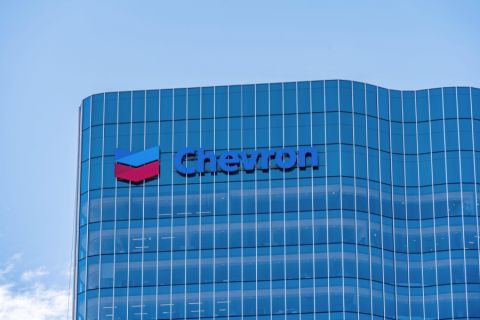Comstock Resources, Inc. announced that its proved oil and natural gas reserves as of December 31, 2011 were estimated at 1,119 billion cubic feet ("Bcf") of natural gas and 32 million barrels of crude oil or 1,311 billion cubic feet of natural gas equivalent ("Bcfe"), an increase of 25% as compared to total proved reserves as of December 31, 2010 of 1,051 Bcfe. Proved reserves on December 31, 2011 were 85% natural gas and 15% crude oil. Proved oil reserves increased 661% in 2011 and now comprise 15% of total reserves as compared to 2010 when they represented only 2% of the total proved reserves. 46% of the proved reserves at December 31, 2011 were classified as proved developed, and 88% are operated by Comstock. The present value, using a 10% discount rate, of the future net cash flows before income taxes of the proved reserves (the "PV 10 Value") was approximately $1.5 billion, using average first of the month 2011 prices of $4.18 per Mcf for natural gas and $92.93 per barrel for oil. The PV 10 Value is different than the standardized measure of discounted estimated future net cash flows which is calculated after income taxes.
Comstock also announced that 2011 production was 95.6 Bcfe or 262 million cubic feet equivalent ("MMcfe") per day. 2011 production increased 31% over 2010's production. 95% of 2011's production was natural gas and 5% was oil. Production in the fourth quarter of 2011 was 25.5 Bcfe or 277 MMcfe per day. 92% of production in the fourth quarter of 2011 was natural gas and 8% was oil. On December 31, 2011 oil comprised 16% of the Company's daily production including the West Texas properties that were acquired on December 29, 2011.
The following table reflects the changes in the proved reserve estimates since the end of 2010:
Oil MBBLs | Natural Gas Bcf | Total Bcfe | ||||||||
Proved Reserves at December 31, 2010 | 4,219 | 1,025.6 | 1,050.9 | |||||||
2011 Production | (838) | (90.6) | (95.6) | |||||||
Acquisitions | 18,865 | 50.6 | 163.7 | |||||||
Extensions and Discoveries | 9,845 | 169.2 | 228.3 | |||||||
Revisions | 8 | (36.2) | (36.1) | |||||||
Proved Reserves at December 31, 2011 | 32,099 | 1,118.6 | 1,311.2 | |||||||
2011 Reserve Replacement Ratio (%) | 372% | |||||||||
2011 Oil and Gas Expenditures relating to Proved Reserves (million $) | $792.1 | |||||||||
2011 Finding Costs ($ per Mcfe) | $ 2.23 | |||||||||
Comstock's successful Eagle Ford shale drilling program in South Texas and its Haynesville shale drilling program in North Louisiana were the primary drivers of the growth in production and proved reserves in 2011. Comstock also acquired 18.9 million barrels of oil and 50.6 Bcf of natural gas or 163.7 Bcfe of proved reserves in 2011 for $218.7 million. Comstock spent $573.4 million for its drilling activities in 2011 and $255.7 million to acquire leases for future exploration and development activities. Excluding the $255.7 million spent to acquire acreage in 2011, finding costs were $2.23 per Mcfe in 2011. Comstock's successful drilling program in the Eagle Ford shale in South Texas added 9.3 million barrels of oil and 7.6 Bcf of natural gas or 10.6 million barrels of oil equivalent to proved reserves in 2011. The Haynesville shale drilling program contributed 139.9 Bcfe to the Company's proved reserves. Proved reserve additions for activities outside of Comstock's shale operations in the Haynesville or Eagle Ford were 24.8 Bcfe.
Capital Budget Update
With the continued weakness of natural gas prices which have worsened in January, Comstock has re-evaluated its drilling plans in 2012 to further de-emphasize natural gas drilling and to reduce overall drilling expenditures in 2012. In December 2011 Comstock was down to two rigs drilling for natural gas in its North Louisiana Haynesville shale drilling program. In 2010 Comstock had seven operated rigs drilling in North Louisiana. During 2011 Comstock moved two rigs to its oil focused Eagle Ford shale drilling program and released three rigs. Comstock plans to move the remaining two natural gas directed rigs to its newly acquired properties in West Texas in February and in early March 2012. Comstock now plans to spend approximately $458.0 million in 2012 for drilling and completion activities. Comstock plans to drill 84 wells (60.6 net) as well as complete an additional 29 wells (19.1 net) drilled in 2011. Comstock plans to spend $158.3 million to drill 43 wells (33.8 net) on its new Delaware Basin properties in West Texas and to complete four wells (2.5 net) that were drilled before Comstock completed the acquisition. Comstock also plans to spend $165.2 million in its South Texas region to drill 24 (21.7 net) Eagle Ford shale horizontal wells in 2012 and $27.7 million to complete four wells (3.2 net) drilled in 2011. In addition, Comstock plans to spend $45.4 million in its East Texas/North Louisiana operating region to drill 17 wells (5.1 net), all of which will be Haynesville or Bossier shale wells. Only three of these wells will be drilled by Comstock, with the remainder being drilled by other operators. Comstock will also spend $61.4 million to complete 20 wells (13.3 net) Haynesville or Bossier shale wells in 2011. Under the revised 2012 drilling plan 92% of the net wells drilled in 2012 will be oil wells and 77% of the budget will be spent on oil projects.
To support its 2012 oil focused drilling program, the Company has entered into oil price swap agreements to hedge 1.7 million barrels of its expected 2012 crude oil production at an average price of approximately $99.45 per barrel. The Company has also begun hedging some of its expected 2013 crude oil production and has 2,000 barrels per day hedged at an average price of $100.00 per barrel.
The decline in the futures prices for natural gas since the third quarter of 2011 is expected to result in certain of the Company's conventional natural gas properties being impaired at December 31, 2011. Comstock expects the fourth quarter 2011 financial results to include an impairment of approximately $61 million ($39.5 million after tax, or $0.86 per share).
Recommended Reading
Helmerich & Payne Announces New CFO J. Kevin Vann
2024-08-05 - H&P’s current CFO Mark W. Smith is set to retire Aug. 15.
Trans Mountain Appoints New CEO, President
2024-08-23 - Trans Mountain appointed Mark Maki to CEO, succeeding Dawn Farrell who will now be chairman of the board.
Atlas Energy Solutions Elects CEO John Turner to Board
2024-08-27 - In electing CEO John Turner to its board, Atlas Energy Solutions increased the size of its board of directors from eight to nine members.
SandRidge Recasts Management with New Chairman, CFO
2024-10-03 - SandRidge Energy has appointed Vincent Intrieri as chairman to succeed Jonathan Frates, who will transition to the role of executive vice president and CFO.
Chevron Moving HQ, CEO from California to Houston
2024-08-02 - Chevron Chairman and CEO Mike Wirth and Vice Chairman Mark Nelson will relocate to Houston, where much of Chevron’s other top leadership is already based.





